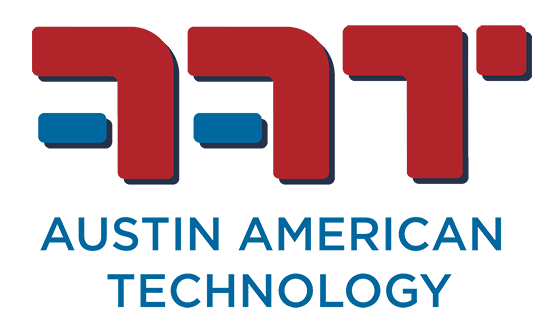There are two machine cleaning systems for electronics: batch and inline. Both types of systems are found in many applications across the electronics and PCB assembly industries. The deciding factor is typically the volume requirement – batch being more cost-effective for low to medium volumes and inline mostly suited for high volumes.
This article will focus on batch cleaning solutions and how to select the best system for a given application.
Batch is the process of cleaning multiple circuit boards or “batches” as a group, and the batches of PCBs are sealed inside the machine where they are washed, rinsed, and dried in the same chamber for a given cycle time. Batch systems have excellent cleaning capabilities and are known for their small footprint within a manufacturing facility. When compared to inline systems, batch units generally have a lower initial capital cost, and less chemical consumption and exhaust emissions.
The goal of any electronics cleaning solution is to obtain the best technology to get the job done at the best price. With so many options to choose from, how do I determine which batch system is best for my application? Fortunately, there are a few key differentiators that will help when comparing the various batch systems.
Contaminants & Chemistry: manufacturers first need to determine the contaminants that to be removed and the cleanliness standards and specifications that must be met. Then a solvent can be selected that can remove the contaminants present. There are many types of solvents including water, IPA, complex alcohols, and organic solvents. Once the solvent is selected, your list of batch cleaning systems may be smaller as not all batch machines are compatible with every solvent. Additionally, some batch units are better suited for removing specific contaminants and residues. For example, Mega Ion is known for its excellent ability to remove reflowed fluxes, machine oils, finger prints as well as other contaminants.
Cleaning Method: there are two main cleaning methods found in batch systems: spray-in-air and spray-under-immersion. With spray-in-air cleaning systems the cleaning solution is sprayed onto the PCBs through oscillating or rotating spray nozzles to ensure adequate contact with all surfaces is achieved. Spray-in-air cleaning utilizes high-flow impact energy and deflective forces to remove contaminants. Alternatively, spray-under-immersion (SUI) systems often use a manifold of nozzles to circulate the fluid and apply mechanical energy to facilitate the PCB cleaning process. SUI systems utilize the power of the solvent to dissolve and remove contaminants while PCBs are submerged, and the mechanical energy applied in the spray-under-immersion method is typically gentler on the PCB than spray-in-air or ultrasonic cleaning techniques. Thus, this method is best suited for applications where a given solvent is very well matched to the contaminant being removed.
ROSE Test Capability: One batch units, such the Aqua Rose Batch, includes an automatic ROSE cleanliness tester, allowing for every batch cleaned to be programmed to include an automatic ROSE test. If ROSE testing is necessary for your application, this feature could be a huge differentiator between the various batch systems available!
Configurations: many of today’s batch systems can operate in different configurations. For example, some units can operate in open or closed loop wash cycles as well as open or closed loop rinse cycles. These configurations provide additional flexibility and can help differentiate the numerous batch systems.
Operating Temperature: temperature can have a big impact on the efficiency and effectiveness of the cleaning process, and is a parameter that must be properly controlled. In certain instances, higher chemistry or water temperatures result in faster cleaning and in those instances, a higher operating temperature may be desirable. The Aqua Therm Batch, for example, can operate up to 199°F. However, it is important to understand the operating temperature range when selecting a cleaning system as not all batch machines can operate at elevated temperatures.
It may seem like a daunting task but it is crucial that manufacturers understand the various batch cleaning options available in order to select the right system. For this reason, it is important to partner with a knowledgeable and experienced cleaning company, like Austin American Technology (AAT). AAT guides customers through the process of selecting a cleaning system to ensure the best equipment and chemistry are chosen to meet each customer’s unique needs.
AAT’s Batch Cleaning Solutions
AAT is an innovative, market-leading company, engineering and manufacturing production and assembly systems for the electronics manufacturing industry. From general purpose to high reliability requirements, AAT systems are design-driven by the science of cleaning. Applications include solar panel cleaning, medical, military, aerospace, cleaning printed circuit board cleaning (aqueous and semi-aqueous), SMT, flip chip, BGA, etc. Our systems include batch and inline, aqueous and solvent, spray-in-air, and spray under immersion with ultrasonics. Below are some of our batch cleaning systems.
All of AAT’s batch solutions clean all flux types using aqueous based chemistries, solvent or water only with multiple recipes depending on the model type.
Aqua Rose Batch: world’s first aqueous batch cleaner and ROSE tester in one – saving time and money by combining cleaning and testing! This system can be configured with a closed loop wash and rinse.
Aqua Therm Batch: multiple cleaning technologies in a small footprint
Mega Ion: jet under immersion cleaning with ROSE test capability.
Contact us today to learn more about our batch cleaning solutions.
